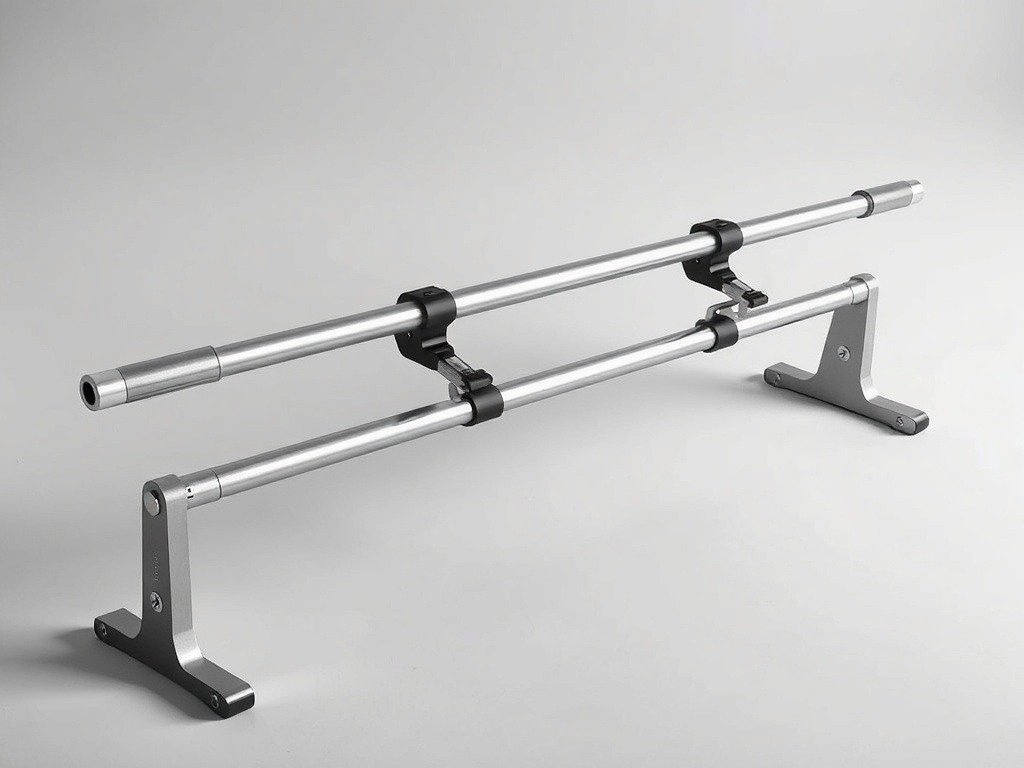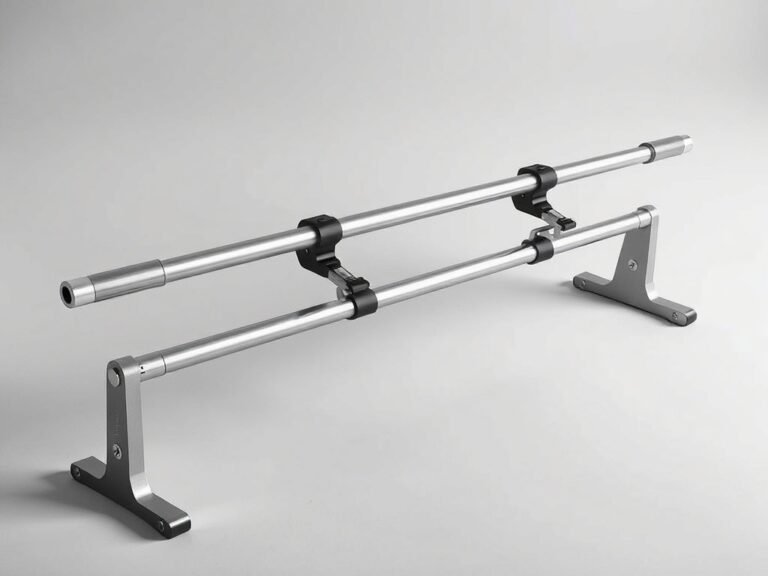
Introduction
A spreader bar is a simple yet highly effective tool used in various industries, from construction and shipping to manufacturing and offshore operations. Its main purpose is to distribute the load evenly when lifting heavy objects with a crane or hoist. By maintaining the load’s stability, a spreader bar helps prevent damage to both the cargo and the lifting equipment. Whether you are dealing with massive shipping containers, large machinery parts, or construction beams, understanding the role of a spreader bar is crucial for safe and efficient lifting operations.
What is a Spreader Bar?
A spreader bar is a horizontal beam that connects to the lifting machine at multiple points. It separates the slings or cables so that the load is lifted from different angles, reducing stress on the lifting points. This design not only improves safety but also minimizes the risk of the load swinging during transport. Spreader bars can be made from steel, aluminum, or other high-strength materials, depending on the lifting capacity required.
How a Spreader Bar Works in Lifting Operations
When a crane lifts a load directly with slings, all the weight is concentrated at the hook, increasing stress and creating instability. The spreader bar solves this problem by creating a wider lifting point, distributing the forces evenly. This makes it easier to lift wide or fragile loads without bending or breaking them. The design also keeps the slings vertical, which is essential for preventing unnecessary side forces that can cause damage.
Types of Spreader Bars
Spreader bars come in various designs to suit different lifting needs. Some common types include:
- Fixed-Length Spreader Bars – These have a set length and are best for repetitive tasks with similar load sizes.
- Adjustable Spreader Bars – Allow length adjustments for different load widths, offering more flexibility.
- Modular Spreader Bars – Can be assembled in different configurations for varying lifting capacities.
- Heavy-Duty Spreader Bars – Designed for industrial and offshore applications where extremely heavy loads are involved.
Key Benefits of Using a Spreader Bar
The benefits of a spreader bar go beyond safety—they also improve efficiency and reduce maintenance costs.
- Prevents damage to loads by distributing weight evenly.
- Increases worker safety during lifting operations.
- Reduces wear and tear on lifting equipment.
- Allows lifting of wider loads that cannot be handled with direct slings.
- Improves control and stability during transportation.
Materials and Load Capacity of Spreader Bars
The strength of a spreader bar depends on its material and construction. Steel spreader bars are the most common due to their durability, but aluminum versions are lighter and easier to handle. The load capacity can range from a few hundred kilograms for small operations to hundreds of tons for industrial lifts.
| Material | Advantages | Common Use |
| Steel | Very strong, durable | Heavy industry |
| Aluminum | Lightweight, corrosion-resistant | Marine work |
| Composite | Non-corrosive, lightweight | Special lifts |
Safety Guidelines for Using Spreader Bars
Safety is the top priority when working with spreader bars. Every lift should follow standard safety procedures to avoid accidents and damage.
- Always inspect the bar for cracks, bends, or other damage before use.
- Ensure the load capacity matches the job requirement.
- Use proper rigging techniques to keep the slings balanced.
- Never exceed the manufacturer’s rated load limit.
- Keep workers at a safe distance during lifting operations.
Common Industries That Use Spreader Bars
Spreader bars are used in many sectors where heavy or awkward loads need lifting.
- Construction: Moving steel beams, concrete slabs, and prefabricated structures.
- Shipping and Logistics: Lifting containers, crates, and heavy cargo.
- Manufacturing: Transporting machinery parts and large assemblies.
- Offshore Operations: Handling pipes, anchors, and subsea equipment.
Difference Between a Spreader Bar and Lifting Beam
While both are used for lifting, a spreader bar and a lifting beam are not the same. A spreader bar keeps the slings vertical and is better for wide loads, while a lifting beam supports the load directly from below. Lifting beams are ideal for shorter loads where vertical clearance is limited.
| Feature | Spreader Bar | Lifting Beam |
| Sling Position | Vertical | Angled or horizontal |
| Best For | Wide, large loads | Shorter, compact loads |
| Weight Handling | High capacity | Medium to high capacity |
Choosing the Right Spreader Bar
Selecting the correct spreader bar depends on several factors. You must consider the weight and dimensions of the load, the available crane capacity, and the working environment. Adjustable and modular designs offer greater flexibility for varied tasks, while fixed designs are better for repetitive lifts.
Maintenance and Inspection of Spreader Bars
A well-maintained spreader bar can last for many years. Regular inspections are essential to check for cracks, bent sections, or worn-out attachment points. Painting or coating steel spreader bars can help prevent rust, especially in marine environments. Keeping a proper inspection record ensures that the equipment remains in safe working condition.
Problems That Can Arise Without a Spreader Bar
Not using a spreader bar in certain lifting situations can lead to serious problems. Without it, slings may angle inward, increasing stress on the load and making it unstable. This can result in damaged cargo, dangerous swinging, and even accidents. For sensitive loads like glass panels or large machinery, the absence of a spreader bar can cause permanent structural damage.
Real-Life Example of Spreader Bar Use
In the shipping industry, moving a 40-foot container without a spreader bar could cause it to twist and damage its frame. By using a spreader bar, the weight is evenly distributed across all lifting points, keeping the container level and intact. Similar principles apply in construction, where beams and pipes are lifted safely without bending.
Innovations in Spreader Bar Design
Modern spreader bars are becoming more advanced, with lightweight materials, telescopic arms, and smart load monitoring systems. These innovations help operators measure stress in real time, ensuring even safer lifting practices. In offshore operations, corrosion-resistant coatings and quick-assembly modular systems are gaining popularity.
Environmental and Operational Considerations
Environmental conditions such as strong winds, rain, or marine corrosion can affect lifting safety. Choosing the right spreader bar material and design for the environment ensures reliability. For example, aluminum and composite materials are better in coastal regions, while heavy-duty steel works best for inland construction.
Conclusion: Why Spreader Bars Are Essential
A spreader bar is more than just a lifting accessory—it is a vital safety and efficiency tool for industries that handle large or heavy loads. By evenly distributing weight, preventing damage, and enhancing stability, it plays a critical role in modern lifting operations. Choosing the right type, maintaining it well, and following safety guidelines ensures that every lift is carried out efficiently and safely.
FAQs
Q1: Can a spreader bar be used with any crane?
Yes, spreader bars can be used with most cranes as long as the crane’s capacity matches or exceeds the spreader bar’s rated load limit.
Q2: How often should a spreader bar be inspected?
It should be inspected before each use and undergo a detailed inspection every few months, depending on usage frequency.
Q3: What is the difference between a spreader bar and a lifting frame?
A lifting frame supports the load from multiple points in a rigid frame, while a spreader bar uses slings to lift from the ends, making it better for long, wide loads.




